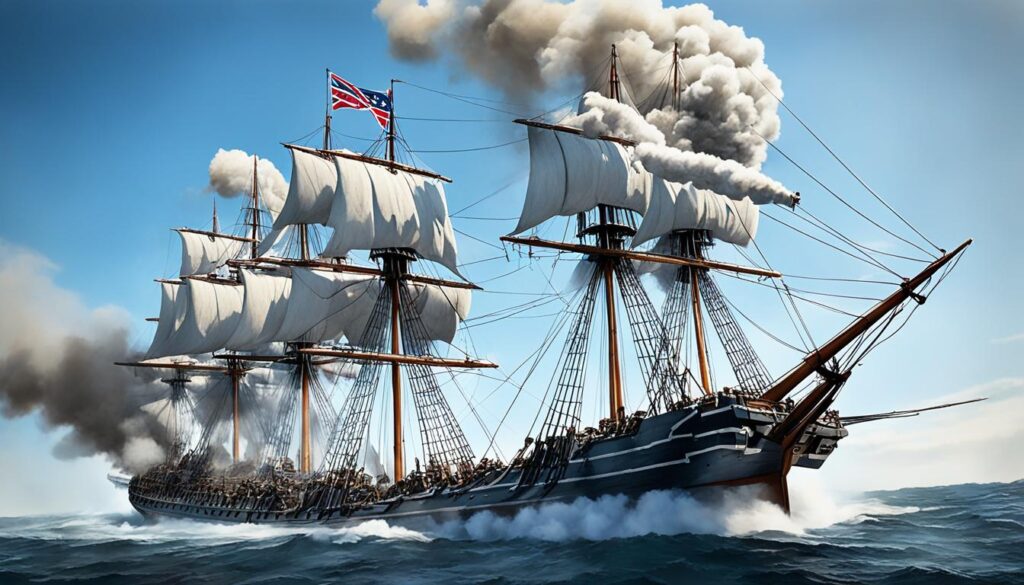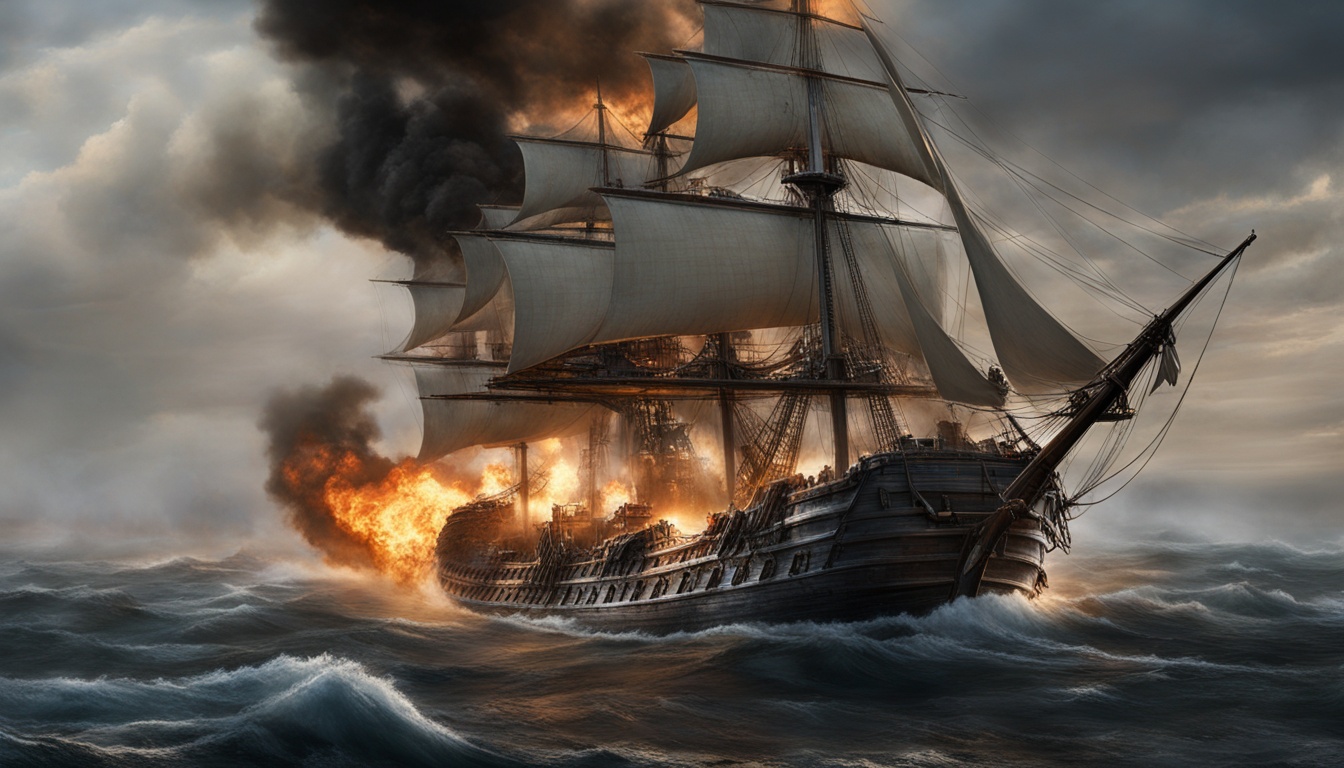During the American Civil War, the Confederate States Navy found a creative solution to their armor shortage. They used cotton bales as armor on their ships, known as cottonclads. These ships played a big role in battles on rivers and coasts. The use of cotton showed how the South was resourceful despite limited resources.
Cottonclads were steam-powered ships with their decks removed and covered in cotton bales. This idea started around 1863 when making ironclads was hard for the Confederacy. These ships were used in important battles like Memphis, Galveston, and Sabine Pass.
John B. Magruder, a Confederate Commander in Texas, came up with the idea of using cotton for armor. He turned steamboats into these unique ships because they didn’t have enough iron. Cotton proved to be a good substitute for iron, protecting the ships from enemy fire and using a common resource.
Key Takeaways
- Confederate ships used cotton bales as makeshift armor during the Civil War
- Cottonclads were steam-powered warships protected by strategically placed cotton bales
- The concept emerged in 1863 due to a shortage of resources for traditional ironclads
- Confederate Commander John B. Magruder pioneered the use of cotton armor in Texas
- Cottonclads participated in significant battles like Memphis, Galveston, and Sabine Pass
- Southern cotton armor showcased Confederate ingenuity in naval warfare
The Birth of Confederate Cotton Armor
During the Civil War, Confederate forces used cotton for protection. They turned ordinary steamboats into strong warships with this idea. They removed the top deck, making the ships look like rams.
Cotton bales, each heavy at 500 pounds, were placed along the ship’s sides. They stacked these bales three high, with another row flat behind. This setup gave sharpshooters a place to hide, which was important for the Confederacy.
To keep the cotton bales in place, iron straps were used. Heavy beams, 14 inches square, added more protection. This way, around 100 sharpshooters could hide behind the cotton on a ship.
Many ships got this new look, including old mail packets and steamers. Ships like Neptune, John F. Carr, Lucy Gwinn, and Bayou City became cotton-armored warships. They were ready for naval battles in a unique Southern way.
Anatomy of a Cottonclad: Unique Features and Armaments
Cottonclads were a key innovation during the American Civil War. They had a thirty-two-pound cannon at the front, showing the South’s clever use of resources. They also had gangplanks ready for boarding enemy ships up close.

Finding big guns was hard for the Confederates. So, cottonclads used a mix of weapons. Many had rams with a 4-inch oak and 1-inch iron plate. This made them try to break through enemy ships.
The cotton bales acted as early American ballistic protection. This smart armor kept the crew safe from enemy fire. Sharpshooters were key to the cottonclad’s success. Their accurate shots often hit enemy crews, just like the precision needed in writing the Declaration of.
Cottonclads show the Confederate Navy’s creativity with limited resources. By using cotton, they made strong warships that changed naval warfare history.
Confederate Cotton Armor in Action: Battle Strategies
Confederate Cotton Armor was key in Southern battle plans during the Civil War. These ships could take on bigger Union vessels with great success. They would steam right at the enemy, using cotton to soak up their shots.
The strategy was all about fighting up close. Confederate ships would fire their smaller cannons and sharpshooters would target the enemy crew. When they got close, they would ram or get tangled with the enemy ships. Then, horse marines would jump on board to take control.
This tactic worked well in many battles. A big win came during the Battle of Galveston on January 1, 1863. Two cottonclads, CS Bayou City and CS Neptune, were key to the Confederate victory. Their bravery showed how clever tactics could beat better-equipped foes.
Notable Battles and the Legacy of Cottonclads
Cottonclads played a big role in the Civil War, showing the creativity of Confederate soldiers. The Battle of Galveston is a great example. These ships with cotton armor helped the Confederacy control a key Texas port, proving their value in naval battles.
Even with some wins, the cottonclads’ story ended sadly. Union forces destroyed, sank, or took all these unique ships. Using cotton as historical combat gear showed the South’s cleverness with limited resources.
Cottonclads, though not as strong as ironclads, made their mark in Civil War naval history. They were a creative answer to the South’s lack of iron and industrial power. This shows the Confederacy’s skill in adapting under tough conditions.
The story of cottonclads is a lasting reminder of wartime innovation. These ships show how need can push military progress, even with few resources. Their tale still interests historians and fans of Civil War naval battles.

Leave a Reply